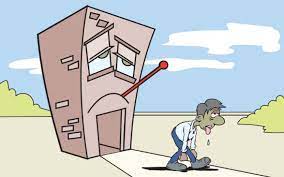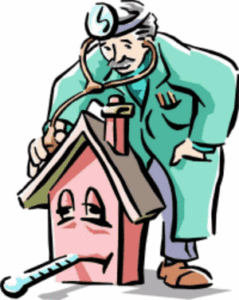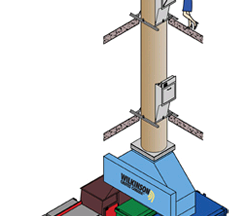 May 2022
May 2022
One of the challenges in a high-rise community is getting rid of odours, fumes and stale air, and bringing in fresh clean air. At best, poor air quality is a nuisance. It can become a health hazard if complaints about stale air, odours and fumes are not addressed.
Cooking smells, pet odours and second-hand smoke are not just offensive. Allergens and pathogens building up in ducts and vents can cause health problems. If enough people are affected your building can be described as having “sick building syndrome”. This is a situation where bad health and comfort are linked to time spent in a building with no specific cause or illness identified. Contributing factors may include mould, low humidity and poor ventilation.
Trash Chute
High-rise buildings often have a small room on each floor with a door leading to a trash chute. This extends from the top floor to a ground floor or basement garbage room. At the bottom is a dumpster or receptacle for catching waste as it drops out of the chute. If the system separates waste from recycling and possibly organics, a sorter directs waste to the proper receptacle as directed by whoever is depositing their waste at the time.
Proper maintenance and use of this system can prevent many building problems.
Unbagged and oversize items can cause a chute blockage leading to a backup of waste in the chute. Unbagged waste can splatter and stick to the sides of a chute. A coating of slimy and smelly waste can attract pests and create overpowering bad smells. Items partially disposed of so they remain in the deposit area and force the inner door open allow smells from the chute to enter residential floors making their way through hallways to residential suites.
Keeping trash chutes and areas clean and odourless requires regular sanitization and maintenance. Scents, used to make hallways smell good and mask bad odours, fail to treat the source of bad smells and pests attracted by waste.
HVAC System
Your building HVAC system has a huge impact on indoor air quality and overall quality of life.
Proper ventilation can rid your building of contaminants that may include carbon monoxide, carbon dioxide, formaldehyde, humidity, microbial growth that may include mould, and undesirable odours. It can reduce the likelihood of mould growth and water infiltration.
Postwar buildings are intentionally more airtight. Inside air is more stagnant. HVAC systems are necessary to exhaust stale air inclusive of offensive smells from cooking, bathrooms and trash, and provide fresh air. Failure to exhaust stale air can result in health problems from pet and pest waste to trash and mould.
Buildings can over-exhaust, meaning they lack sufficient fresh air to balance air being exhausted. This creates drafts that cause whistling windows, elevator shafts and doors.
What you don’t see can hurt you
One challenge with odours is that they are subjective. Some companies specialize in suppressing or eliminating certain odours from areas of a building. Professionals can measure the strength of odours to determine if a smell is a nuisance or health hazard. They may insert a camera inside ductwork to determine if a blockage or obstruction exists. A blocked kitchen or bathroom duct in one suite can affect many residents.
An indoor air quality assessment can determine the quality of your building’s air. There is testing for humidity, mould, air flow and volatile organic compounds (VOCs) which are found in renovation and household products, and paints. Fans and related equipment should be checked to ensure they are clean and operating. Filters should be changed regularly. Ventilation shafts should be cleaned periodically.
Regular cleaning of ductwork is the best and easiest way to ensure undesirable smells and contaminants don’t enter your home.
 Ensuring the air in modern buildings is clean, fresh and safe is an important and necessary task. Proper maintenance of systems, and quick resolution of problems that arise, is the best way to maintain good health and fewer problems.
Ensuring the air in modern buildings is clean, fresh and safe is an important and necessary task. Proper maintenance of systems, and quick resolution of problems that arise, is the best way to maintain good health and fewer problems.







